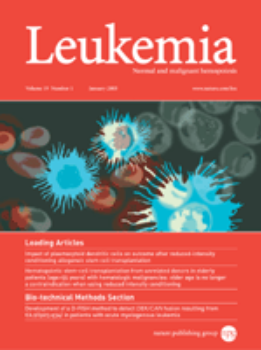Refining PET-based response in extramedullary multiple myeloma using total lesion glycolysis.
IF 13.4
1区 医学
Q1 HEMATOLOGY
引用次数: 0
Abstract
Positron Emission Tomography (PET)-based assessments are an integral part of response assessment in patients with multiple myeloma (MM) with extramedullary disease (EMD), yet their utility in EMD remains to be systematically studied. We retrospectively evaluated 95 patients with EMD undergoing FDG PET/CT imaging for metabolic response assessment using visual Deauville Scores (DS) and total lesion glycolysis (TLG). TLG responses were categorized as complete metabolic response (CMR; 100% reduction), major metabolic response (MMR; <100% to ≥50% reduction), and non-significant metabolic response (NMR; <50% reduction). The median progression-free survival (PFS) differed significantly by DS (22.4 vs. 4.3 vs. 2.8 months for DS ≤ 3, =4, and =5, respectively; p < 0.0001) and by TLG response (36.5 vs. 5.4 vs. 2.2 months for CMR, MMR, NMR; p < 0.0001). TLG offered better discrimination than DS, with approximately one-third of patients in each DS stratum being reclassified by the TLG stratification. In a multivariable analysis, TLG response [HR 2.6 (95% CI: 1.8-3.8), p < 0.0001] remained independently prognostic after adjusting for cytogenetics, triple-class refractoriness, and de novo EMD status. The 18-month OS rates were 89%, 42% and 19% for the TLG CMR, MMR, and NMR cohorts (p < 0.001). These findings support the integration of TLG into response criteria for EMD.髓外多发性骨髓瘤采用全病变糖酵解法改善pet反应。
基于正电子发射断层扫描(PET)的评估是多发性骨髓瘤(MM)合并髓外疾病(EMD)患者反应评估的一个组成部分,但其在EMD中的应用仍有待系统研究。我们回顾性评估了95例接受FDG PET/CT成像的EMD患者,使用视觉多维尔评分(DS)和病变总糖溶解(TLG)评估代谢反应。TLG反应分为完全代谢反应(CMR; 100%还原)、主要代谢反应(MMR; <100%至≥50%还原)和非显著代谢反应(NMR; <50%还原)。中位无进展生存期(PFS)在DS (DS≤3、=4和=5分别为22.4个月vs 4.3个月vs 2.8个月,p < 0.0001)和TLG反应(CMR、MMR、NMR为36.5个月vs 5.4个月vs 2.2个月,p < 0.0001)之间差异显著。TLG提供比DS更好的区分,每个DS层中约有三分之一的患者通过TLG分层重新分类。在多变量分析中,在调整细胞遗传学、三级难治性和新发EMD状态后,TLG反应[HR 2.6 (95% CI: 1.8-3.8), p < 0.0001]仍然是独立的预后因素。TLG CMR、MMR和NMR组的18个月OS率分别为89%、42%和19% (p < 0.001)。这些发现支持将TLG纳入EMD的反应标准。
本文章由计算机程序翻译,如有差异,请以英文原文为准。
求助全文
约1分钟内获得全文
求助全文
来源期刊

Leukemia
医学-血液学
CiteScore
18.10
自引率
3.50%
发文量
270
审稿时长
3-6 weeks
期刊介绍:
Title: Leukemia
Journal Overview:
Publishes high-quality, peer-reviewed research
Covers all aspects of research and treatment of leukemia and allied diseases
Includes studies of normal hemopoiesis due to comparative relevance
Topics of Interest:
Oncogenes
Growth factors
Stem cells
Leukemia genomics
Cell cycle
Signal transduction
Molecular targets for therapy
And more
Content Types:
Original research articles
Reviews
Letters
Correspondence
Comments elaborating on significant advances and covering topical issues
 求助内容:
求助内容: 应助结果提醒方式:
应助结果提醒方式:


